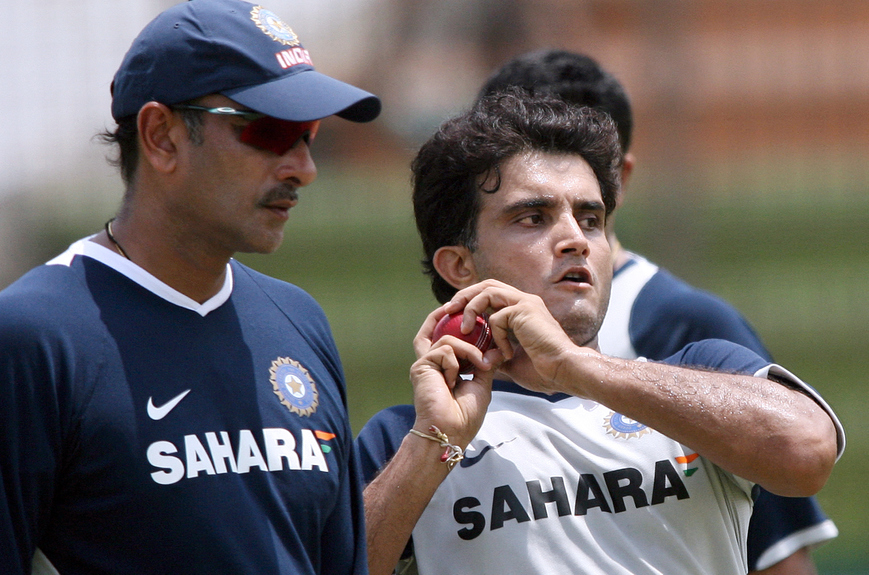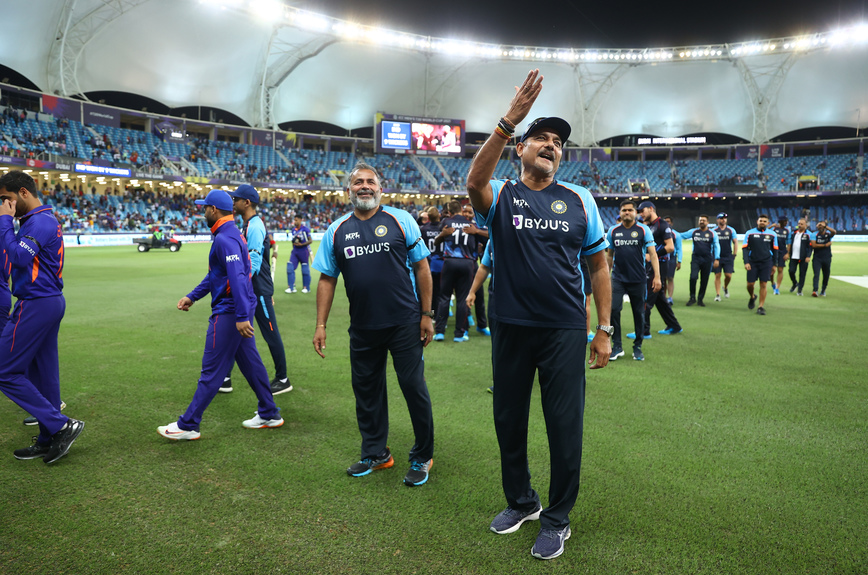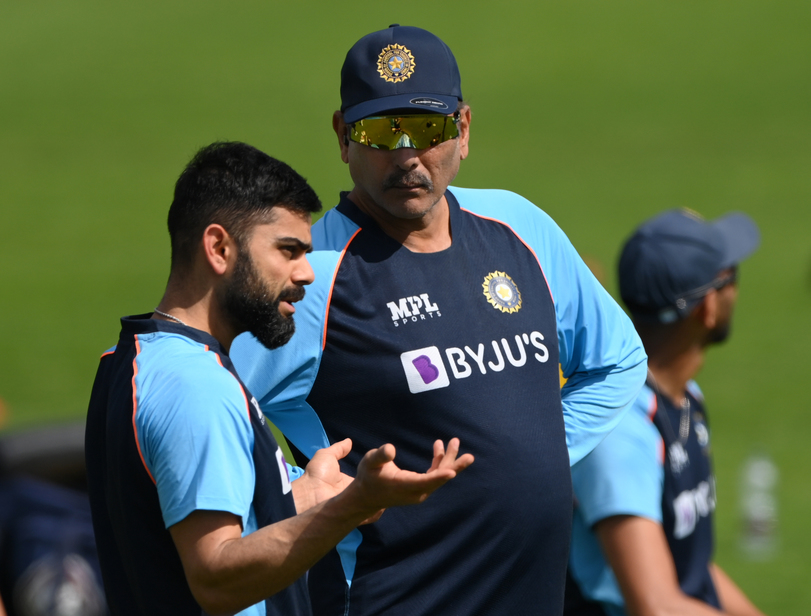 OPINION
OPINIONIt’s appropriate that acclaimed crisis man Rahul Dravid is succeeding original crisis man Ravi Shastri as head coach of the Indian team.
During an illustrious career spanning a decade and a half, Dravid did everything and more than was asked of him. Open the batting in Tests? Check. Drop down from No. 3 to No. 6 from time to time to enable a more attacking option to be employed at one-drop? Check. Keep wicket in one-dayers to lend balance and depth for the 2003 World Cup campaign? Check. Make a surprise, dramatic international T20 debut at the age of 38? Check.
A decade and a bit before Dravid, Shastri was the one ticking all the boxes. An impressive if unexpected debut in New Zealand in early 1981 fetched him 15 wickets in three Tests, but it wasn’t long before the doughty Mumbaikar went from a specialist left-arm spinner batting to No. 10 to an opening batsman, primarily on away tours.
The not unjustified reputation of being a players’ captain didn’t work to his advantage at a time when the Board of Control for Cricket in India invested in skippers who they felt would toe the line of the officialdom with the least resistance. That’s why one of the shrewdest thinkers of the game led the country in only a solitary Test.
An untimely knee injury ended his international career when he was still in his early 30s, but while his playing days were behind him, Shastri continued to be deeply involved with the sport which means the world to him. Commentary and writing were obvious options for the articulate, intelligent Shastri. He continued to espouse the cause of Indian cricket volubly while maintaining his fight-for-the-just-cause attitude, best exemplified by his role as a spokesperson of the players during their contractual pow-wow with the BCCI in 2002, ahead of the Champions Trophy.
Shastri’s first direct tryst with the national side after his retirement came in 2007, when he went as cricket manager on the tour of Bangladesh in the immediacy of India’s shock elimination from the 50-over World Cup. To say that the team was in shambles will be no exaggeration.
Insecurity and distrust ran through the unit without exception, an aftermath of both the World Cup exit and the tempestuous times when Greg Chappell was the head coach. Shastri’s brief wasn’t so much to ensure success in Bangladesh as to restore morale, balance and equanimity. Few men are more adept at this delicate exercise.
 For seven years thereafter, he continued to dabble in the media until, in the August of 2014, another SOS went out from the BCCI. India were wiping the floor in the Test series in England, coach Duncan Fletcher didn’t seem to have any answers on how to arrest the slide.
For seven years thereafter, he continued to dabble in the media until, in the August of 2014, another SOS went out from the BCCI. India were wiping the floor in the Test series in England, coach Duncan Fletcher didn’t seem to have any answers on how to arrest the slide.
Shastri was appointed team director and allowed the freedom to choose his support staff. Without hesitation, he turned to old friend Bharat Arun as the bowling coach, with Sanjay Bangar and R Sridhar slotting in as batting and fielding coaches respectively. It was the start of an alliance that was to revolutionise Indian cricket.
 When Fletcher’s term ended after the 2015 World Cup, Shastri was singularly in charge. More than two decades after his last international game, he had lost none of his inherent aggression or self-belief. His first Test assignment in the post-Fletcher era was in Sri Lanka, where India hadn’t won a series for 22 years. A familiar tale seemed to be unfolding when, after dominating the early exchanges in the first Test in Galle, the visitors snatched defeat from the inviting jaws of victory.
When Fletcher’s term ended after the 2015 World Cup, Shastri was singularly in charge. More than two decades after his last international game, he had lost none of his inherent aggression or self-belief. His first Test assignment in the post-Fletcher era was in Sri Lanka, where India hadn’t won a series for 22 years. A familiar tale seemed to be unfolding when, after dominating the early exchanges in the first Test in Galle, the visitors snatched defeat from the inviting jaws of victory.
That result triggered an elaborate soul-searching exercise after two hours of complete silence in the dressing-room. Players were encouraged to speak the mind, and there was unanimity in defining what the character of the side would be going forward – to play with purpose and intent, to not be tame and timid, to be willing to lose if it came to that but with the primary intention of eyeing victory. The net outcome – a convincing 2-1 series triumph.
In Virat Kohli, Shastri found the perfect enforcer. First as director and then head coach, Shastri saw a kindred spirit in the aggressive skipper. Their alliance was split for a year when Anil Kumble oversaw a period of extraordinary success, but the champion leggie stepped aside at the end of this initial term, saying it had become untenable for him to continue in his role, given the various misgivings the skipper seemed to nurse against him.
Return Shastri, amid much hype and pomp, this time as head coach. For the next four years, with Kohli now captain across formats, the coach-skipper duo took the Indian team from strength to strength in Test cricket and in bilateral white-ball series, though the one big lacuna in both their CVs will remain the inability to win a single global title during their long association.
 How will history judge Shastri the head coach? There is no one answer to that. India did wonderfully well in the longer format, registering their maiden series win in Australia in 2018-19 and following it up, even more extraordinarily, with a magical 2-1 triumph two seasons later.
How will history judge Shastri the head coach? There is no one answer to that. India did wonderfully well in the longer format, registering their maiden series win in Australia in 2018-19 and following it up, even more extraordinarily, with a magical 2-1 triumph two seasons later.
That success has to be the unquestioned highlight of Shastri’s coaching tenure. Unlike in the previous series, the Aussies were at full strength with the suspended duo of David Warner and Steven Smith back in the mix. India kept losing established players to injury at an alarming rate, this after having been shot out for an unprecedented 36 in the first Test in Adelaide, after which Kohli returned home on paternity leave.
It was on that outing that the best of coach Shastri surfaced. He and his handpicked support staff – Vikram Rathour had replaced Bangar as batting coach – rallied the troops admirably, ensuring there were no deleterious effects of either the Adelaide meltdown, the then unfamiliar and completely stifling bio-bubble or the cramming up of the infirmary which forced India to field a bowling attack with less than ten caps for the final Test in Brisbane.
Shastri has often been hauled up by the pundits for his complete and total willingness to toe the Kohli line on most things. Perhaps, we are being uncharitable, because the results speak for themselves in Test cricket. Perhaps, Shastri saw no need to differ with his captain for the sake of it.
No matter, without Kohli in Australia, he was at his inspirational, motivational, tactical best. It was he who had advised Arun to work out a plan for his fast bowlers that took the offside out of the equation. Australia found the straighter lines and packed leg-side fields a deterrent to their preferred rapid rate of scoring and perished trying to fit a square peg in a round hole. That was Shastri’s perfect riposte to those who dismissed him as a mere motivational asset, not a great tactician.
With no little assistance from Arun, Shastri has left his successor with a massive array of pace riches to choose from. That, and victories in the Test arena, will be the most glittering gems in Shastri’s crown of achievements. But there have been eyebrow-raising calls too. The treatment of R Ashwin, arguably India’s greatest match-winner in the post-Kumble-Harbhajan Singh era.
The baseless feeling of being persecuted against, a sense that percolated through the ranks, by the media and therefore the subsequent cherry-picking of ‘friendly’ mediapersons. The unchecked downslide of the established middle-order – Cheteshwar Pujara, Kohli himself and Ajinkya Rahane – in Test cricket for the last 21 months. And, most crucially, no white-ball titles worth the name.
All said, there are more blues than reds in the balance sheet. Shastri can put his feet up and reflect on a job excellently done, but if he is honest to himself -- which he most certainly is – he will feel the team could have done better during his spell. Who’s to say how much better?